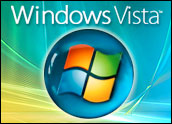
Dell and storage manufacturing partner EMC launched new entry-level storage area network (SAN) solutions aimed at small and medium-sized businesses (SMBs) Tuesday branded for each hardware maker.
EMC’s CLARiiON AX4 and Dell’s AX4-5 are intended to meet the growing demand for storage capacity driven by both SMBs and satellite offices of larger enterprises. It’s a demand that, according to IDC, increases by nearly 60 percent each year.
The highly flexible, available and scalable SAN can be easily deployed, expanded and reconfigured in VMware infrastructure and traditional IT environments with no application downtime, EMC said.
“This is the latest step in the strong partnership between Dell and EMC,” said Darren Thomas, vice president and general manager, Dell storage. “We’ve worked closely with EMC to define, design and deliver this system tailored to SMBs. Together we are delivering capabilities not previously seen in entry-level SANs.”
A SAN by Any Other Name
Both SANs offer SMBs expansion capabilities that can take them from three to as many as 60 drives that support up to 45 TB (terrabytes) of data with 750 GB (gigabytes) on each drive. However, the hardware makers will soon kick that up a notch so that the two SANs support as much as 60 TB of data, 1 TB on each of the system’s drives. They can be configured for either iSCSI or Fibre Channel networks and also support mixed drive configurations with SAS (Serial Attached SCSI) drives for high performance and SATA (Serial Advanced Technology Attachment) drives for greater capacity.
The AX4 and AX4-5 run the same software, EMC Navisphere Express from EMC, and are based on EMC’s CX3 architecture. They are available in either entry-level or advanced configurations, with the entry-level offering providing up to 3 TB of storage capacity and support for as many as 10 hosts. Business users requiring the more advanced configuration will have the ability to consolidate storage for up to 64 hosts, both physical and virtual, running Windows, Linux, Unix, NetWare and VMware, simultaneously.
Pricing for the two systems is also fairly similar with EMC’s AX4, starting at US$8,599 for the 3 TB configuration.
Both systems buck the industry trend away from Fibre Channel drives in favor of the much more flexible SAS and SATA drives that are interoperable, using the same interface regardless of which drive is used and affording users the ability to have high-performance drives and higher capacity drives with lower RPMs in the same cabinet, explained Andrew Reichman, analyst, Forrester Research.
“I’m not too excited about them. The industry trend is toward SAS and SATA drives instead of Fibre Channel drives,” he told TechNewsWorld. “Pretty much every vendor that is coming out with an SMB product has a SAS SATA mix.
“The software is just an express version of the EMC Navisphere, which is not particularly exciting,” Reichman added.
In comparison with a similar device from EqualLogic, which was recently acquired by Dell, Reichman said, the software is much more exciting because it is easier to use and manage and has more capabilities and thin provisioning.
“You don’t have to be an expert [with EqualLogic’s software]. Whereas the Navisphere is more kind of the traditional storage array, zoning and LUN (Logical Unit Number) masking kind of stuff,” he continued. “They’re saying [Express] is simpler to use than the full-blown Navisphere tool, but it is still not that exciting.”
That said, SMBs will definitely want to take a look at the system, but business users may find more advanced features on other products, explained Reichman.
“The Fibre Channel is interesting; a lot of these SMB products are coming iSCSI-only, so it’s kind of interesting that EMC/Dell are continuing to offer Fibre Channel front end connectivity,” he noted.
“But this is pretty much an incremental add,” Reichman concluded.




















































